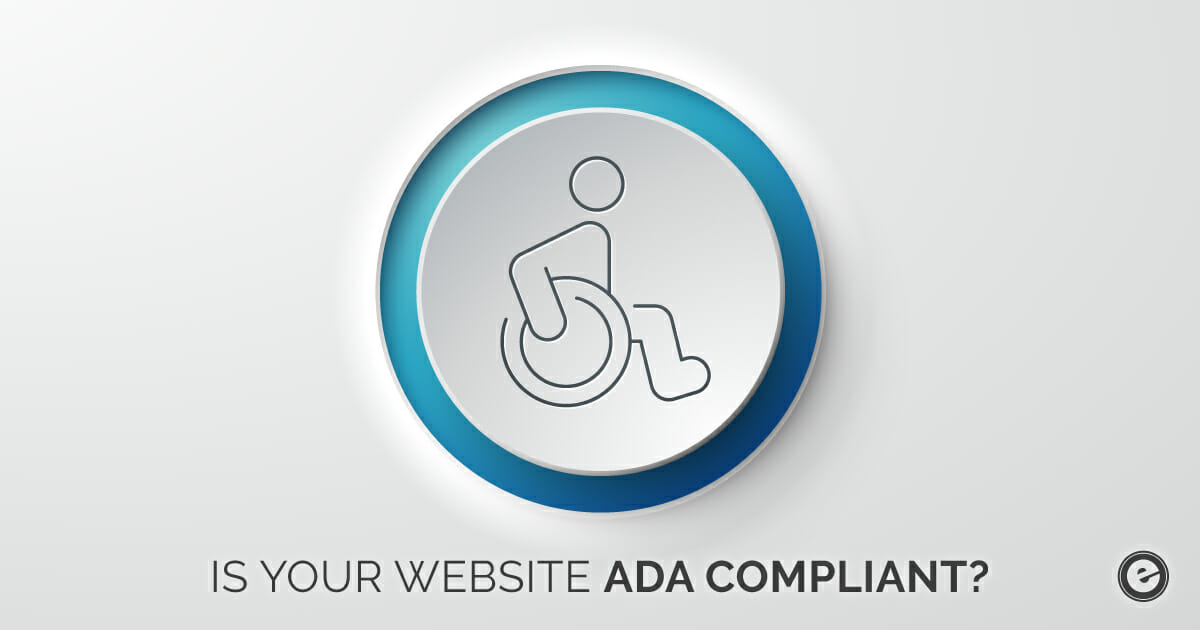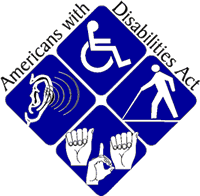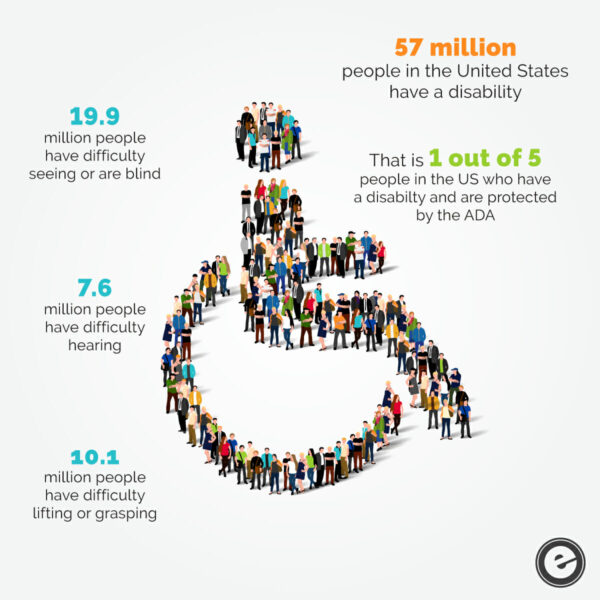
Nearly one in four adults in the United States has a disability that impacts activities of daily life. While most business owners know that federal law mandates physical accessibility and covers structures such as wheelchair ramps and counter heights, many overlook the fact that the internet should be accessible to all as well. Which laws cover compliance? How can you make your website more accessible to the disabled?
Which Law Covers Compliance?
Accessibility for individuals affected by a disability has a historically been the center of discussion and a point of contention in the United States. Many businesses and government entities chose to provide accessible entrances and other features on their properties to enable those with disabilities to access their facilities. Yet, others remained unaware of the physical barriers provided by features of their buildings or ignored the difficulties experienced by people unable to utilize facilities and services due to their disabilities.

As a result of the ADA, organizations began to install the wheelchair ramps, accessible restrooms, and other physical accommodations we have grown accustomed to. The changes provided access to many businesses, services, and products formerly unavailable to disabled people. However, one thing nobody anticipated in 1990 was the eventual rise of the internet.
The Internet Added a New Dimension to ADA Compliance
Since 1990, the internet has become a central part of the lives of many Americans. People use the internet for entertainment, research, business, and much more. While the necessity of getting online and using a website to accomplish a task was not something that was crucial to survival in the 90’s, times have certainly changed. Now – perhaps particularly for disabled individuals who experience difficulty leaving home to accomplish business – online accessibility is a legitimate concern.
In its original language, the ADA required every organization to provide equal access to its facilities and resources for disabled persons. Now that millions of people nationwide utilize the internet to shop and accomplish business and personal tasks, among many other things, it stands to reason that organizations’ online services should remain accessible as well. As the ADA has evolved, undergoing changes as recently as 2018, some changes apply to internet accessibility.

ADA Is Not Specific
Title III of the ADA states that although the original ADA does not mention websites, its stipulations regarding equal accessibility should apply to web access for sites that provide public services. As such, the writers of the ADA have provided Web Content Accessibility Guidelines, or WCAG, to provide recommendations for organizations to make their websites more accessible.
Other than these guidelines, however, the ADA provides no specific law requiring all business websites to maintain ADA compliance. In short, there are not laws in place requiring you to format your commercial business site in any way. However, in recent years, a series of lawsuits and their associated rulings have begun to shape how businesses should go about providing accessibility.
Tips For an ADA Compliant Website
Although your business may not be required by law to format your website to adhere to certain standards, ADA compliance can help you avoid litigation in the future. In addition, it is simply good business practice Follow these suggestions for maintaining ADA compliance:
- Ensure your site can be navigated by keyboard. Multiple disabilities make accessing your site via mouse or touchscreen impossible. In addition, some third-party accessibility accommodations utilize keyboard navigation to work effectively. Thus, your website should be fully functional with keyboard-only commands.
- Provide enlargement features. Users of your site must be able to easily enlarge text and media features for use on a standard screen or third-party accessible screen. Primarily, you must ensure your content can be enlarged up to 200% without requiring your users to scroll horizontally or breaking up content.
- Add alt tags for media files. An alt tag allows a user unable to understand a media feature on your page – whether photo, video, or audio file – to access a description of the content behind the tag. When your users click on or mouse over an alt tag, it will provide a description of the contents of the media file as well as its purpose on the page. The description could be audio for those unable to view a photo, or text based for those unable to hear an audio file.
- Add transcripts for media content. In addition to alt tags, provide full text transcripts for video and audio files. Deaf and hard of hearing people are unable to access the content of these formats, but can read transcripts.
- Optimize header code. Your site’s header code should provide vital information about the language used on the page. Disabled users utilizing text readers depend on header code to identify the language used so that the text reader is prepared to read in the proper language.
- Ensure website availability across all devices. Whether a disabled user is utilizing a computer, smartphone, tablet, or other accessibility device to navigate your site, all portions of your site should be available on all devices. It is crucial to ensure your website loads and all features and subpages are fully navigable.
- Provide accessibility instructions. In the event that users experience access issues – primarily input issues – when attempting to navigate your site, provide on-screen suggestions for other approaches. Such instructions should be automatic, clear, and easy to follow.
- Ensure your website is easy to navigate. In general, taking care to organize your site in a way that makes access intuitive is important for any user’s experience. Arrange clickable links, buttons, and features like menus so that any user is able to determine which features to select, and clearly distinguish separate site features from one another. Finally, ensure your color and text style selections are easy to read for users of all ranges of vision.
- Provide accessible documents. Any documents or files users download from your site should be provided in multiple formats, including HTML, .pdf, and .rtf for access by third party accessibility programs and devices.
While commercial business operators may not yet have a stringent set of requirements for access, providing accessibility accommodations is just good practice. As the legal boundaries of ADA compliance change, it is essential that you provide access to your site to all your users, in order to ensure you stay ahead of the compliance game.


